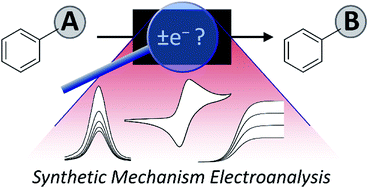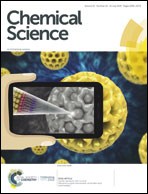A synthetic chemist's guide to electroanalytical tools for studying reaction mechanisms
Abstract
Monitoring reactive intermediates can provide vital information in the study of synthetic reaction mechanisms, enabling the design of new catalysts and methods. Many synthetic transformations are centred on the alteration of oxidation states, but these redox processes frequently pass through intermediates with short life-times, making their study challenging. A variety of electroanalytical tools can be utilised to investigate these redox-active intermediates: from voltammetry to in situ spectroelectrochemistry and scanning electrochemical microscopy. This perspective provides an overview of these tools, with examples of both electrochemically-initiated processes and monitoring redox-active intermediates formed chemically in solution. The article is designed to introduce synthetic organic and organometallic chemists to electroanalytical techniques and their use in probing key mechanistic questions.

- This article is part of the themed collections: Most popular 2019-2020 review articles, Most popular 2019-2020 organic chemistry articles and Most popular 2018-2019 organic chemistry articles


 Please wait while we load your content...
Please wait while we load your content...